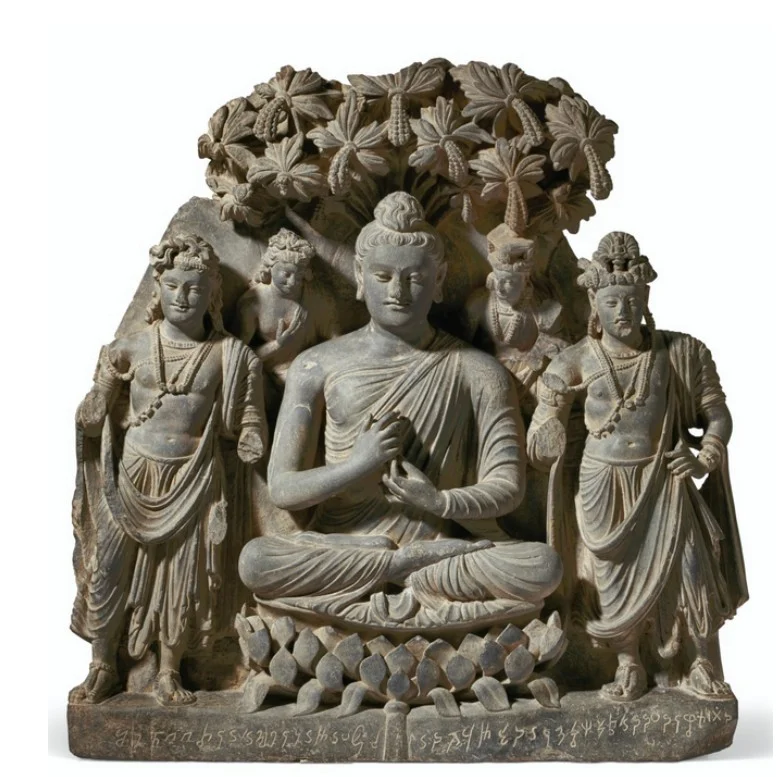Discovery by Charles Masson (1827 CE / 2370 BE)
During his explorations of ancient Gandhara (modern-day Jalalabad, Afghanistan and northern Pakistan), British explorer Charles Masson uncovered numerous artifacts including coins, inscriptions, seals, and Buddhist sculptures at a ruined monastery. Among these treasures was an exceptionally crafted Gandharan-style Buddha statue:
Material: Black stone
Style: Greco-Buddhist (Hellenistic influence)
Posture: Seated in teaching posture (dharmachakra mudra)
Base: Four-tiered lotus pedestal flanked by two standing Bodhisattvas
Date: ~357 CE (900 BE) - Peak of Buddhist art in Gandhara
The Inscription (Kharoṣṭhī Script)
The base bears a bilingual Prakrit-Sanskrit inscription:
*"Saṃ 4 1 Phaguṇasa māsasa di pañcamī Buddhanandasa Trepiṭakasa dānamukhe mātā-pitṛ-dhara-vadina puṇyāye bhavatu"*
Translation:
"In the year 5, on the 5th day of the month of Phālguna (February–March), this religious gift was made by the Venerable Buddhananda, Master of the Tripiṭaka. May this merit extend to his departed parents."
Significance of the Donor
Monk Buddhananda: The title "Trepiṭaka" (Pali: Tipiṭaka) confirms he was a highly learned scholar who had memorized the Buddhist canon.
Filial Piety: The dedication to his deceased parents reflects the Buddhist practice of matapitṛ-pūjā (honoring ancestors through merit-making).
Current Location
The statue is displayed at the Metropolitan Museum of Art, New York (Gallery 235).
Why This Artifact Matters
Cross-Cultural Artistry:
Combines Greek realism (wavy hair, draped robe) with Indian Buddhist iconography.
The lotus base symbolizes purity in both Hindu and Buddhist traditions.
Historical Context:
Created during the Kushan Empire when Gandhara was a Buddhist hub.
Shows monastic patronage of art for spiritual and memorial purposes.
Colonial Legacy:
Like many Gandharan artifacts, it was removed during British colonial rule.
Did You Know? The month Phālguna corresponds to modern February–March, when Buddhist festivals like Māgha Pūjā occur.
(Note: "Trepiṭaka" was an honorific for monks who mastered the Vinaya, Sutta, and Abhidhamma texts.)


